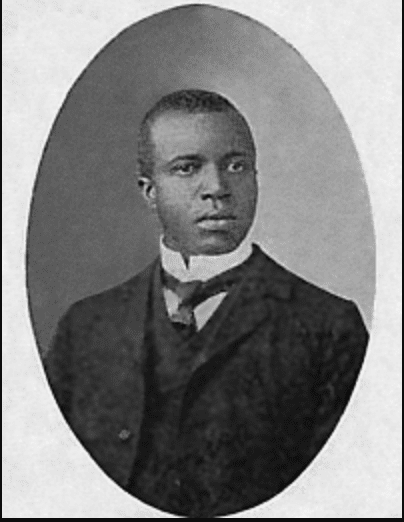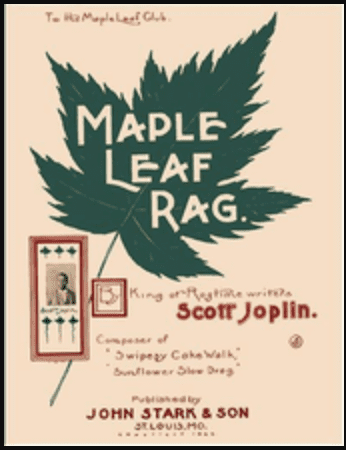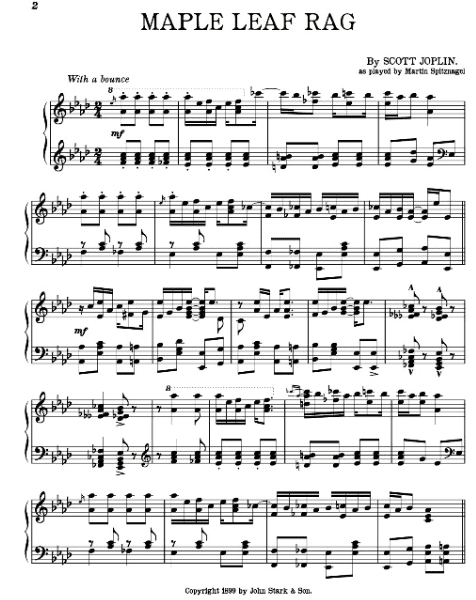Ragtime was created and made popular by African American musicians, many of whom could not read or write music. It developed as a playing style and was played in brothels, saloons, bars, and other entertainment venues were Blacks first found performing opportunities.
One of the first musicians to Biller, Ben Harney published his “You’ve Been a Good Old Wagon but You’ve Done Broke Down.” The song is one of the most important examples of early ragtime, documenting the translation of ragtime from oral to written score. This notated version of banjo playing style was written to teach pianists how to play ragtime or how to “rag” a song. “Ragging” a song meant to syncopate a tune or embellish it with accents. As the genre ragtime developed into the jazz age, the term “jazzing” was used synonymously with “ragging,’ as were ragtime and jazz. The two weren’t distinguished until later.

Whereas ragtime was initially frowned upon by whites, they eventually desired to learn to play the style. After the World’s Fair in Chicago in 1893, the cakewalk (a dance held during and post slavery where blacks made fun of their white masters, exaggerating their behavior; prize for best performance was a cake) became one of the most popular dances in the United States and Europe. More European Americans and Europeans began performing cakewalks and playing ragtime. However, it was difficult for whites to copy the sound and style played by African American musicians; so, many composers were hired to try and notate songs by hearing and publish the songs. However, many notes and rhythms were “lost in translation” as whites had a lot of difficulty playing the syncopation and complex improvisation that the blacks were playing. The sounds and rhythms were something used predominately in the African American community, many brought over from Africa, something the whites were neither trained in or used to.

In 1897, several important ragtime compositions were published. White bandleader William Krell published “Mississippi Rag.” However, the song was not actually a rag, but more so a cakewalk. Several songs were written and published after this, including “Rag Time “by Warren Beebe and “Rag Time Patrol” by R. J. Hamilton. With the publication of this sheet music, ragtime deviated from its authentic origin with the simple syncopation of cakewalk rather than the more complicated and intricate syncopation of ragtime.
As many African American pianists could not read or write music, many did not initially consider translating their compositions for publication and sale. Performing music was financially sound as they piano players in bars and saloons received tips. Also, it was complicated to publish a rag and even more difficult for African Americans to receive acknowledgement and payment in the publishing industry.
While Harney called himself the father of ragtime, Scott Joplin became known and is still dubbed the King of Ragtime, as he played a huge role in the transition of ragtime from oral to written and wrote many ragtime pieces. The ragtime composer and musician, encouraged black musicians to learn how to read and write music and notation, so they could profit from the popular genre and the publishing industry.

Joplin himself was experiencing success as a writer and composer from the publication of his “Maple Leaf Rag.” Joplin worked with publisher John Stark who specialized in ragtime, promoted, and advocated for it. Joplin went on to introduce many black musicians to composing and publishing, helping them gain success through not only performing but from royalties from publishing companies. Joplin developed a method of writing and playing ragtime, which he taught to many musicians and published.

The popularity of ragtime help catapult piano sales, piano lessons, and the music publishing industry. Whites and blacks, male and female, were taking more piano lessons, playing more venues and many musicians were learned how to do business with publishers. Ragtime helped make publishing a very profitable arm of the music industry and led to the copyright and royalty standards we have today in music.


